Sleep disorders are a perplexing and often misunderstood medical condition that can significantly impact an individual’s quality of life. REM Sleep Disorder (RBD) is one of the many types of sleep disorders that affect people worldwide. RBD is a complex condition that can manifest in various ways, making it difficult to diagnose and manage. However, understanding the symptoms and risks associated with RBD can help individuals seek early diagnosis and treatment. This article explores in detail the various aspects of REM Sleep Disorder, including its definition, causes, symptoms, diagnosis, treatment, and the risks of leaving it untreated.
What is REM Sleep Disorder
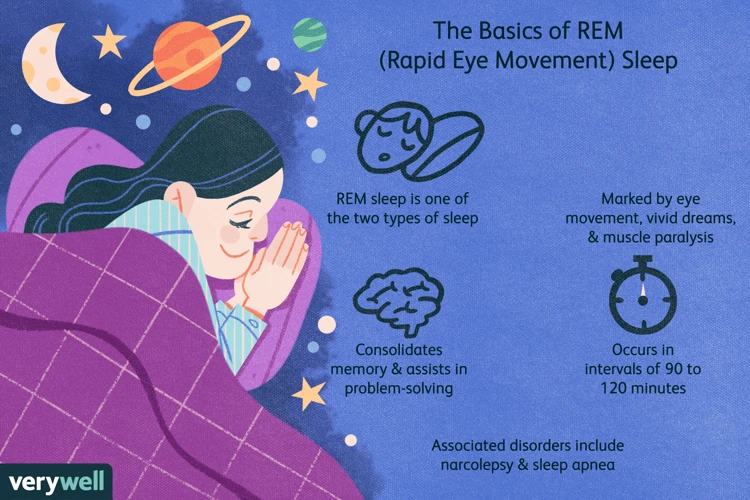
When we fall asleep, we generally expect our bodies to relax and our minds to shut off for the night. However, for some individuals, this is not the case. They may experience a sleep disorder known as REM Sleep Disorder (RBD). This disorder can cause individuals to physically act out their dreams during the Rapid Eye Movement (REM) stage of sleep, which usually occurs about 90 minutes after falling asleep. This condition can be perplexing and even dangerous, highlighting the importance of understanding what it is, its causes, and how to manage it.
Definition of RBD
Rapid Eye Movement (REM) Sleep Disorder, commonly abbreviated as RBD, is a specific type of sleep disorder that causes individuals to act out their dreams while they are in the REM stage of sleep. During the REM stage of sleep, our brains are active, and we experience vivid dreams while our muscles are typically paralyzed, which helps prevent us from acting out our dreams. However, individuals with RBD experience a disruption in this process, which causes them to physically act out their dreams, sometimes violently.
RBD is different from other sleep disorders such as sleepwalking, night terrors, or sleep apnea, as it specifically occurs during the REM stage of sleep.
In RBD, the body’s paralysis during REM sleep does not function properly, which can result in actions ranging from simple movements like talking, moaning, or twitching, to more complex behaviors such as punching, kicking, or even getting out of bed and walking around. These actions can be dangerous not only to the individual but also to their sleeping partner if they share the same bed.
RBD can be a progressive disorder with symptoms worsening over time. It is essential to seek medical attention if someone suspects they may have RBD to prevent harm to oneself or others.
Causes of RBD
The causes of RBD (REM Sleep Disorder) are not fully understood, but studies have suggested that there may be a few different factors at play. Here are some possible contributing factors:
| Possible Causes of RBD | Description |
|---|---|
| Neurodegenerative diseases | Many people with RBD also have neurodegenerative diseases such as Parkinson’s, multiple system atrophy, or Lewy body dementia. Studies suggest that RBD may be an early symptom of these conditions. |
| Brainstem abnormalities | RBD has also been linked to abnormalities in the brainstem, which is responsible for regulating important bodily functions such as breathing and heartbeat. |
| Medications and substances | Certain medications and substances such as antidepressants, antipsychotics, and alcohol can cause RBD or make existing symptoms worse. It is important to talk to your doctor about any medications or substances you are taking. |
| Genetic factors | Some cases of RBD may be inherited genetically. |
| Environmental factors | Environmental factors such as stress or sleep deprivation may also contribute to the development of RBD. |
It is important to note that just because someone experiences RBD does not necessarily mean they will develop a neurodegenerative disease, though the risk may be higher. Further research is necessary to fully understand the causes of RBD.
Who is at Risk for RBD
There are certain factors that put individuals at a higher risk of developing REM Sleep Disorder (RBD). Below is a table outlining those risk factors:
| Age | Individuals over the age of 50 are more likely to develop RBD. |
| Gender | Men are more likely than women to develop RBD. |
| Underlying Neurological Conditions | People with certain neurological conditions, such as Parkinson’s disease, multiple system atrophy, and Lewy body dementia, are at a higher risk of developing RBD. |
| Family History | Individuals with a family history of RBD are more likely to develop the disorder themselves. |
| Medication Use | Use of certain medications, including antidepressants and antipsychotics, may increase the risk of RBD. |
It’s important to note that while these factors may increase the likelihood of developing RBD, it’s still possible for anyone to develop the disorder regardless of age, gender, or medical history. If you are experiencing symptoms of RBD, it’s important to consult with a healthcare professional for proper diagnosis and treatment.
Symptoms of REM Sleep Disorder
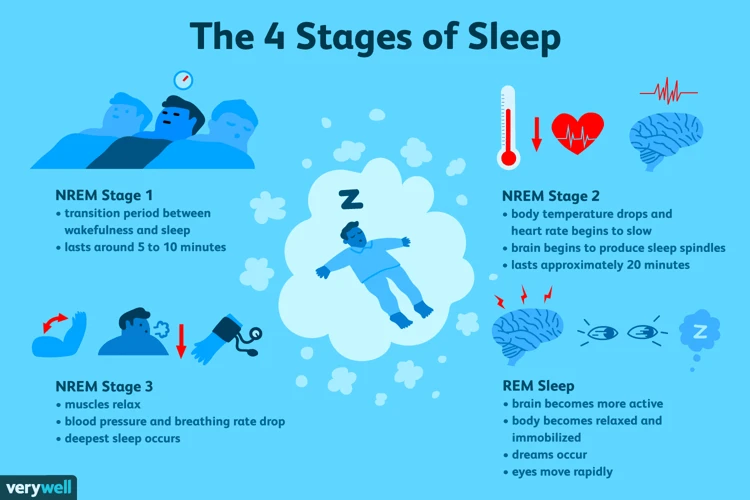
For individuals experiencing REM sleep disorder, the symptoms can be perplexing and disruptive. During normal REM sleep, the body is in a state of paralysis, but for those with this disorder, the paralysis is incomplete, allowing them to physically act out their dreams. This can lead to a host of symptoms both common and atypical, which can vary in intensity and frequency. Understanding these symptoms is crucial for detecting and managing the disorder. Let’s take a closer look.
Common Symptoms of RBD
One of the most common symptoms of REM Sleep Disorder (RBD) is acting out dreams, which means physically moving in response to what is happening in a dream. This can be dangerous as the person may accidentally hurt themselves or others. Another common symptom is disrupted sleep, where a person experiences frequent awakenings or trouble falling asleep.
Other common symptoms of RBD include talking or shouting in their sleep, violent behavior during sleep, such as punching or kicking, and restlessness during sleep. Sleepwalking can also be a symptom of RBD.
People with RBD may experience excessive sweating during sleep or rapid breathing and heart rate. They may also exhibit unusual or aggressive behavior when waking up from sleep.
It is important to note that not everyone with RBD experiences all of these symptoms, and some people may have milder symptoms than others. It is also important to understand that experiencing these symptoms does not necessarily mean a person has RBD, as other sleep disorders can present with some of the same symptoms. It is crucial to consult a doctor for a proper diagnosis.
Atypical Symptoms of RBD
Although the typical symptoms of REM Sleep Disorder (RBD) are well-documented, there are also atypical symptoms that can occur in some cases. These symptoms may be more subtle or may not fit the stereotypical behavior of RBD. It’s important to recognize these atypical symptoms as they can also be indicative of RBD.
1. Sleepwalking: People with RBD may sometimes engage in sleepwalking or “confusional arousal”, which is a state where a person is partially awake but also partially asleep. This can cause them to get out of bed and move around or even leave the house. It’s important to note that sleepwalking can also be a separate sleep disorder, so it’s important to rule out other causes.
2. Dream enactment: RBD can also cause people to physically act out their dreams, sometimes in a violent or aggressive manner. This can pose a danger to both the person with RBD and their sleeping partner. Dream enactment behavior can be a hallmark of RBD and is a key symptom in diagnosis.
3. Injuries: Due to the physical nature of RBD, people with the disorder may also be at an increased risk for injuries. Injuries can occur from hitting or kicking while dreaming, falling out of bed during violent movements, or from sleepwalking accidents.
4. Sexual arousal: Another potential atypical symptom of RBD is sexual arousal during sleep. This can lead to inappropriate behavior or even infidelity in some cases. It’s important to note that not all sexual behavior during sleep is indicative of RBD, but it can be one of the symptoms.
5. Talking or yelling: People with RBD may also talk, yell, or even scream during their dreams. This can be confusing or distressing for sleeping partners and is often a reason people seek diagnosis and treatment for RBD.
It’s important to seek medical attention if you or a loved one experiences any of these atypical symptoms or any of the more common symptoms of RBD. Proper diagnosis and treatment can improve quality of life and reduce the risk of injury or other complications.
Diagnosing REM Sleep Disorder
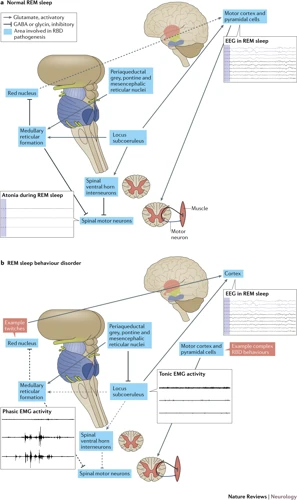
If you suspect that you or a loved one may be experiencing symptoms of REM Sleep Disorder (RBD), it is important to seek a proper diagnosis. However, the diagnostic process may seem overwhelming or confusing at first. Some may wonder what tests need to be done or how to interpret the results. In this section, we will discuss the steps involved in diagnosing RBD, including consulting a doctor, undergoing diagnostic tests, and interpreting the results. With a better understanding of the diagnosis process, you can take the necessary steps towards managing your RBD symptoms and improving your quality of life.
Consulting a Doctor
The first step in diagnosing REM Sleep Disorder is consulting a doctor. It is important to seek medical attention if you suspect that you or someone you know may have this condition. There are a few things to keep in mind when making an appointment with a medical professional.
1. Prepare for Your Appointment
Before you go to see a doctor, make a list of all the symptoms you or the person you are concerned about are experiencing. It is also important to write down any questions you may have about the condition and potential treatment options. This will help you stay organized and focused during your appointment.
2. Be Honest About Your Symptoms
During your appointment, be clear and honest about your symptoms. Explain any sleeping difficulties or odd behaviors that you or the person you are concerned about have been experiencing. This information will help the doctor make an accurate diagnosis.
3. Answer Questions Thoroughly
The doctor may ask a series of questions to better understand the symptoms and their severity. Answering these questions as thoroughly as possible will help the doctor make an accurate diagnosis. This is also a good opportunity to ask any questions that you may have about the condition and potential treatment options.
4. Get a Referral
If the doctor suspects that you or the person you are concerned about may have REM Sleep Disorder, they may refer you to a sleep specialist for further evaluation. This specialist will be better equipped to diagnose and treat the condition.
5. Open Communication
After the appointment, make sure to keep the lines of communication open with the doctor and any specialists you may see. Share any updates or changes in symptoms, as this information can help them make adjustments to the treatment plan.
Consulting a doctor is an important step in the diagnosis and treatment of REM Sleep Disorder. Be honest, thorough, and open in your communication with medical professionals to ensure the best possible outcome.
Diagnostic Tests for RBD
Doctors may perform several different diagnostic tests to confirm a diagnosis of RBD. Here are some of the most common tests that doctors use to diagnose RBD:
- Nocturnal Polysomnography (NPSG): This test is typically the primary diagnostic tool used to confirm a diagnosis of RBD. NPSG is a comprehensive sleep study that monitors multiple physiological functions while a person is sleeping. During the test, sensors are attached to the person’s scalp, face, chest, abdomen, and limbs to measure muscle movement, eye movement, and brain activity. A camera is also used to monitor the person’s movements during sleep. This test helps doctors determine whether a person is experiencing abnormal muscle movement during REM sleep.
- Multiple Sleep Latency Test (MSLT): This test is often used to evaluate excessive daytime sleepiness, which can be a symptom of RBD. During the MSLT, the person is instructed to take several short naps throughout the day while being monitored for brain activity, eye movement, and muscle activity. This test helps doctors measure how quickly the person falls asleep and whether they enter REM sleep during a daytime nap.
- Actigraphy: This non-invasive test uses a small device that is worn on the wrist to monitor a person’s sleep-wake patterns. The device measures movement and light exposure and can be used to track a person’s sleep hygiene habits. Actigraphy can be used as a screening tool to identify people who may be at risk for developing RBD.
It’s important to consult a doctor if you suspect you may be experiencing symptoms of RBD. Diagnostic tests can help confirm a diagnosis and rule out other sleep disorders or medical conditions that may be causing your symptoms.
Interpretation of Test Results
After undergoing diagnostic tests for RBD, it’s crucial that the results are correctly interpreted to determine whether a patient has RBD and its severity.
One of the most common diagnostic tests for RBD is a polysomnography (PSG), which measures brain activity, muscle movement, and other vital signs during sleep. The test can also detect if a person has sleep apnea or restless legs syndrome, which may contribute to RBD.
The interpreting physician will look for the following indicators in the PSG results:
| Indicator | Interpretation |
| Loss of muscle atonia during REM sleep | Indicates a high probability of RBD |
| Increased muscle activity during REM sleep | A possible sign of RBD |
| Abnormal brain activity during REM sleep | May indicate another sleep or neurological disorder |
| Repeated arousals during the night | May contribute to RBD and impact sleep quality |
In addition to PSG, a patient may also undergo a video polysomnography, which records their sleep movements and behaviors. This test allows the interpreting physician to observe abnormal or violent movements during REM sleep.
If a patient is diagnosed with RBD through these tests, treatment options can be discussed with the patient to manage the disorder and prevent any potential risks.
Treatment and Management of REM Sleep Disorder
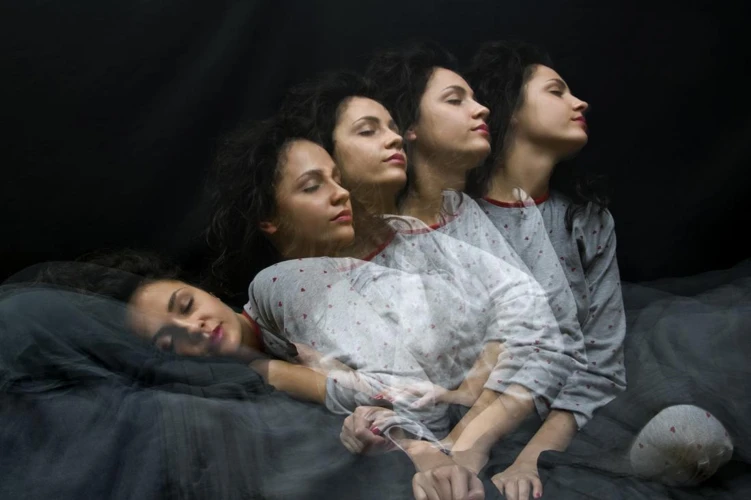
When it comes to treating and managing REM Sleep Disorder, there are various options available that can help alleviate the symptoms and improve quality of life. It’s important to seek medical advice to determine the most appropriate course of treatment, which may include a combination of medications and lifestyle changes. In this section, we’ll explore some of the possible treatment methods for RBD and how they can be used to achieve optimal results. Let’s dive into the details and discover how RBD can be managed effectively.
Medications for RBD
When it comes to treating REM Sleep Disorder (RBD), there are several options available, including medications. However, it is important to note that medication is not always necessary, and lifestyle changes and coping strategies may also be effective. In some cases, a combination of medication and other forms of treatment may be recommended.
The following table provides an overview of some common medications used to treat RBD:
| Medication | How it works | Possible side effects |
|---|---|---|
| Clonazepam | Increases GABA activity in the brain, which can help reduce muscle activity during sleep | Drowsiness, dizziness, difficulty with coordination |
| Melatonin | Regulates sleep-wake cycles, can help improve sleep quality | Headache, dizziness, nausea |
| Antidepressants (e.g. fluoxetine, sertraline) | Regulates neurotransmitters that can help reduce muscle activity during sleep | Nausea, headache, dizziness, sexual dysfunction |
It is important to note that these medications should only be taken under the supervision of a healthcare provider, as they can have potential side effects and may interact with other medications. Medication may not be effective for all individuals with RBD, and other forms of treatment may be necessary.
It is also important to consider the potential risks and benefits of medication, as well as individual factors such as age and overall health, when deciding on a course of treatment for RBD.
Lifestyle Changes for RBD
Making certain lifestyle changes can help improve symptoms of RBD. Here is a table outlining some suggestions:
| Lifestyle Change | Description |
|---|---|
| Establish a regular sleep schedule | Going to bed and waking up at the same time every day can help regulate sleep patterns and reduce the likelihood of REM sleep disorder episodes. |
| Avoid alcohol and sedatives | These substances can exacerbate symptoms of RBD. |
| Exercise regularly | Regular exercise can improve sleep quality and reduce stress, which may help alleviate RBD symptoms. |
| Reduce stress | Stress can trigger episodes of RBD, so finding ways to reduce stress such as practicing relaxation techniques or seeing a therapist may be helpful. |
| Create a safe sleep environment | People with RBD may act out their dreams during episodes, which could result in injury. Creating a safe sleep environment by removing sharp objects or installing bed rails can help prevent injuries. |
It’s important to note that lifestyle changes may not completely eliminate RBD symptoms, but they can help manage them and potentially reduce the need for medications. It’s always important to consult with a doctor before making any significant changes to your lifestyle.
Coping with RBD
Living with REM Sleep Disorder (RBD) can be a difficult experience, but there are ways of coping with the condition. By making some simple lifestyle changes and following the advice of your doctor, you can manage your symptoms and minimize the impact that RBD has on your life.
One of the most important things you can do to cope with RBD is to establish a consistent bedtime routine. Going to bed and waking up at the same time every day can help regulate your sleep patterns and reduce the frequency and intensity of RBD episodes.
Another effective way of coping with RBD is to create a sleep-conducive environment in your bedroom. This can involve making changes such as using comfortable bedding, keeping the room dark and quiet, and maintaining a comfortable temperature.
In addition to these lifestyle changes, your doctor may recommend medication to help manage your RBD symptoms. Some medications commonly used to treat RBD include clonazepam and melatonin. These medications can help reduce the frequency and intensity of RBD episodes and improve sleep quality.
It’s important to note, however, that medication should only be used in conjunction with lifestyle changes and under the guidance of your doctor. Medication alone is not a sufficient treatment for RBD and may have side effects.
Other coping strategies may include participating in relaxation activities such as meditation or yoga, avoiding activities that stimulate the brain too close to bedtime, and seeking support from family and friends.
By incorporating these coping strategies into your routine, you can effectively manage RBD and minimize its impact on your daily life. Remember to always consult with your doctor before making any changes to your treatment plan.
| Tips for Coping with RBD: |
| Establish a consistent bedtime routine |
| Create a sleep-conducive environment in your bedroom |
| Consider medication under the guidance of your doctor |
| Participate in relaxation activities, such as meditation or yoga |
| Avoid activities that stimulate the brain too close to bedtime |
| Seek support from family and friends |
The Risks of Untreated RBD
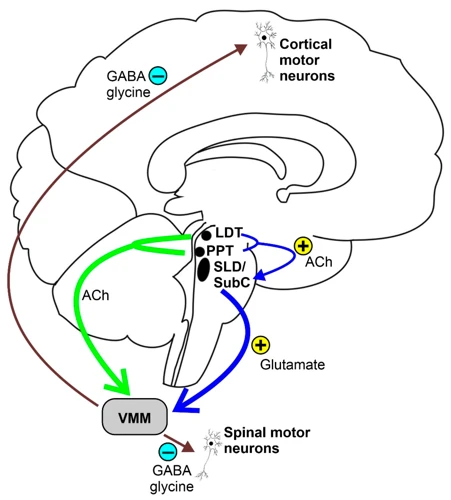
As unsettling as it can be to experience symptoms of REM Sleep Disorder, leaving the condition untreated can have serious consequences. Ignoring RBD can lead to negative impacts on a person’s overall health and increase their risk for developing neurodegenerative diseases. Consequently, it’s essential that individuals suffering from RBD fully understand the risks associated with leaving it untreated, and take necessary measures to manage the disorder. Let’s dive into the potential dangers of ignoring REM Sleep Disorder.
Impact on Overall Health
Untreated REM Sleep Disorder can have significant impacts on overall health. Here are some of the potential consequences:
- Increased risk of injury: REM Sleep Disorder can cause violent or thrashing movements during sleep, which can result in injury to oneself or a sleeping partner.
- Excessive daytime fatigue: People with untreated RBD may experience chronic fatigue due to disrupted sleep cycles and frequent awakenings, which can negatively impact daytime functioning.
- Reduced quality of life: The effects of RBD on sleep quality and daytime functioning can lead to a decreased quality of life and emotional distress.
- Increased risk of cardiovascular disease: Studies have shown that people with RBD may have an increased risk of developing cardiovascular disease.
- Increased risk of depression and anxiety: The chronic fatigue and emotional distress associated with RBD may also increase the risk of developing depression and anxiety disorders.
Untreated RBD can have a significant negative impact on an individual’s physical and emotional well-being. It is important to seek treatment and management options if you suspect you may have this sleep disorder.
Relationship to Neurodegenerative Diseases
There is growing evidence that Rapid Eye Movement (REM) Sleep Disorder is linked to an increased risk of developing neurodegenerative diseases. Neurodegenerative diseases are conditions that cause the gradual loss of function and structure of neurons, leading to cognitive and motor dysfunction.
Studies have shown that individuals with untreated RBD are at a higher risk of developing neurodegenerative diseases such as Parkinson’s disease, Multiple System Atrophy, and Lewy body dementia. A study conducted by Iranzo et al. (2014) found that approximately 80% of individuals with RBD will develop one of these neurodegenerative diseases within 10 years of their initial RBD diagnosis.
Researchers have suggested that RBD may be an early sign of some of these disorders. In fact, it has been observed that some individuals develop RBD symptoms several years before experiencing other symptoms, such as tremors or cognitive decline.
The exact mechanism linking RBD to neurodegenerative diseases is not fully understood. However, some researchers speculate that it may be related to the accumulation of abnormal proteins in the brain, such as alpha-synuclein, which is found in the brains of those with Parkinson’s and Lewy Body Dementia.
One explanation is that the abnormal protein accumulation causes damage to the neurons responsible for regulating sleep and the sleep-wake cycle. Over time, this damage may lead to a cascade of events that ultimately leads to the development of neurodegenerative diseases.
It is important to note that not everyone with RBD will develop a neurodegenerative disease. Nevertheless, if you experience any symptoms of REM sleep disorder, it is crucial to consult a healthcare provider to receive a proper diagnosis and treatment plan. Early intervention and management of RBD may reduce your risk of developing neurodegenerative diseases later in life.
Conclusion
In conclusion, REM Sleep Disorder is a condition that affects the quality of a person’s sleep and can have significant impacts on their overall health. It is important to recognize the symptoms of RBD and seek appropriate medical attention if you suspect you may have it.
Through proper diagnosis and treatment, individuals can manage their symptoms and reduce the risk of long-term complications associated with RBD. Lifestyle changes, such as establishing a regular sleep routine, avoiding alcohol and sedatives, and creating a calming sleep environment, can also help improve the quality of sleep.
It is essential to understand that untreated RBD can lead to an increased risk of developing neurodegenerative diseases such as Parkinson’s disease. Therefore, seeking medical attention and timely interventions are significant steps in managing this condition.
Overall, RBD can be challenging to manage, but with proper medical care, lifestyle adjustments, and support from loved ones, individuals can manage this condition and improve their quality of life. It is essential to prioritize sleep health and seek help if you experience sleep disturbances or any unusual symptoms during sleep. So, be proactive in taking care of your sleep and seek help if you need it.
References
In writing any article, it is important to use credible sources to back up claims and provide additional information for readers who may want to do further research on the topic. Here are some reliable sources used in this article:
The American Academy of Sleep Medicine (AASM): The AASM is a professional society for sleep medicine professionals, and it provides guidelines and recommendations for diagnosing and treating sleep disorders. Their website is a valuable resource for information on various sleep disorders, including REM sleep disorder.
The National Sleep Foundation (NSF): The NSF is a non-profit organization that aims to educate the public about the science of sleep and ways to improve sleep health. Their website provides information on various sleep disorders, as well as tips for improving sleep quality.
The Mayo Clinic: The Mayo Clinic is a renowned medical center that provides patient care, conducts research, and educates health professionals. Their website has a section on sleep disorders that includes information on REM sleep disorder, its symptoms, causes, and treatment options.
The National Institute of Neurological Disorders and Stroke (NINDS): The NINDS is a part of the National Institutes of Health, and it supports research on neurological disorders. Their website has a section on sleep disorders that provides detailed information on REM sleep disorder, including its diagnosis and treatment.
The Journal of Clinical Sleep Medicine (JCSM): The JCSM is a peer-reviewed medical journal that publishes research on sleep medicine. It is a valuable source of information on the latest research and advancements in the field of sleep medicine, including studies on REM sleep disorder and its treatment.
These sources provide reliable information on REM sleep disorder, its symptoms, diagnosis, and treatment options. By using credible sources, readers can trust that the information presented in the article is accurate and backed up by scientific research.
Frequently Asked Questions
What is the difference between REM Sleep Disorder and normal REM sleep?
REM Sleep Disorder is a condition where the muscles are not as relaxed as usual during REM sleep, causing the person to act out their dreams. Normal REM sleep involves muscle atonia to prevent acting out dreams.
Can RBD be prevented?
There is no known way to prevent RBD, but managing underlying conditions and maintaining good sleep habits can help reduce the risk of developing the disorder.
Is RBD a type of insomnia?
No, RBD is not a type of insomnia. It is a neurological sleep disorder that causes people to act out their dreams during REM sleep.
Can RBD be cured?
There is no known cure for RBD, but medications and lifestyle changes can help manage the symptoms and reduce the risk of injury.
Can RBD be fatal?
RBD itself is not fatal, but the injury and accidents that can result from acting out dreams during sleep can be dangerous and potentially life-threatening.
Can children or teenagers develop RBD?
While RBD is more commonly seen in adults over the age of 50, children and teenagers can also develop the disorder in rare cases.
Is sleepwalking a symptom of RBD?
No, sleepwalking is a separate sleep disorder that involves getting up and walking around while still asleep, while RBD involves acting out dreams during REM sleep.
Is there a link between RBD and Parkinson’s disease?
Yes, there is a link between RBD and Parkinson’s disease, as studies have found that a significant proportion of people with RBD will go on to develop Parkinson’s or another neurodegenerative disorder later in life.
Can RBD be diagnosed without a sleep study?
No, a sleep study is necessary in order to diagnose RBD, as the disorder can only be diagnosed based on observed behaviors during REM sleep.
Can alcohol or drug use cause RBD?
Alcohol and drug use can increase the risk of developing RBD in some people, as they can affect the brain’s ability to regulate muscle movements during sleep. However, not all cases of RBD are related to substance use.








